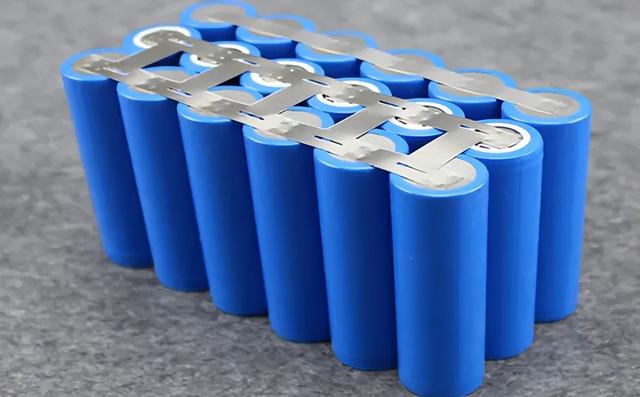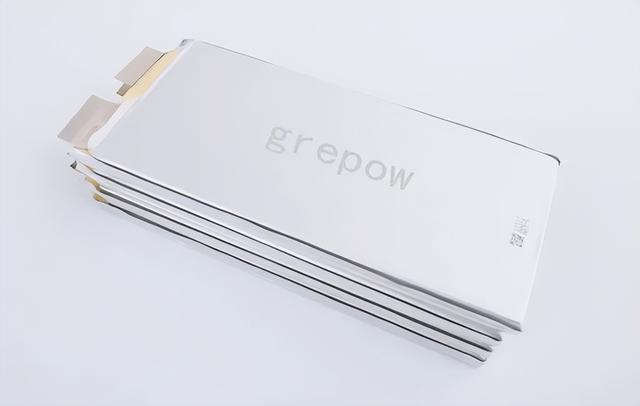With the continuous improvement of high technology, the national carbon peak carbon neutral strategic objectives, to promote carbon peak carbon neutral has risen to the national strategy, energy saving and environmental protection green
development has become the undertone of the times, more and more energy saving and environmental protection products are applied to the market, take the battery market, lithium batteries with a variety of advantages to quickly replace the traditional
lead-acid batteries, become the main force in the energy storage market. There are many classifications of lithium batteries, ternary materials, lithium iron phosphate materials, lithium ion, iron manganate, lithium polymer batteries and other types; then,
lithium batteries or polymer batteries are good?
A, lithium battery introduction

Lithium battery is a secondary battery (rechargeable battery), relying mainly on the movement of lithium ions between the positive and negative electrodes to work. In the discharge process, Li ⁺ back and forth between the two electrodes embedded and
disembedded; charging, Li ⁺ from the positive electrode off, after the electrolyte embedded in the negative electrode, the negative electrode in a lithium-rich state; put TV is the opposite.
As lithium-ion batteries are more widely used than lithium primary batteries, so lithium batteries in a narrower sense usually refers to lithium-ion batteries; within the lithium-ion battery and there are two classifications: polymer lithium-ion batteries and
liquid lithium-ion batteries, because the quality is greater and more applications are liquid lithium-ion batteries, so the narrower understanding of lithium batteries refers to liquid lithium-ion batteries, and polymer lithium-ion batteries are also called
lithium polymer batteries. People are customarily referred to as polymer batteries.
Lithium battery
Second, the difference between lithium batteries and polymer batteries
Polymer batteries used in the positive and negative materials and liquid lithium ion are the same, positive materials are divided into lithium cobaltate, lithium manganate, ternary materials and lithium iron phosphate materials, negative graphite, the
working principle of the battery is also basically the same.
The main difference between lithium batteries and polymer batteries is the electrolyte, liquid lithium-ion batteries use a liquid electrolyte, while polymer batteries use a solid polymer electrolyte instead, which can be "dry" or "gel". This polymer can be
"dry" or "gel", and most of them use polymer gel electrolyte.
Third,lithium battery or polymer battery is better?
Polymer batteries are an upgrade from lithium ion batteries. Compared to the popular lithium-ion batteries, polymer batteries have the advantages of high capacity, small size (thin) and safety (no explosion). However, as it takes time to replace the whole
industry chain, its cost is still relatively high and it is only used in high-end digital products (ultra-thin laptops, etc.).
The advantages of polymer batteries are mainly manifested in the following aspects:
1, polymer battery single cell working voltage up to 3, 6v ~ 3, 8v is much higher than the Ni-MH and Ni-Cd batteries 1, 2V voltage.
2, polymer battery capacity density is large, its capacity density is NiMH or NiCd battery 1, 5 ~ 2, 5 times, or higher.
3,The self-discharge of polymer battery is small, and its capacity loss is very small after a long time.
4,polymer battery life is long, the cycle life of normal use can reach more than 500 times.
5,The polymer battery has no memory effect, so it is not necessary to empty the remaining power before charging, which is convenient to use.
6,Good safety performance
Polymer lithium battery in the structure of the aluminum-plastic soft packaging, as opposed to the metal shell of the liquid battery cells, once the safety hazards, the liquid battery cells are prone to explosion, while the polymer battery cells will at most
only gas drum.
7,thickness is small, can be made thinner
Polymer batteries are ultra-thin and the battery is able to be assembled into a credit card. Ordinary liquid lithium battery using first custom shell, then plug positive and negative materials, thickness to 3, 6mm below the technical bottleneck, polymer cells
do not have this problem, the thickness can be done below 1mm, in line with the direction of the current demand for mobile phones.

Polymer battery
8. Light weight
Polymer batteries with polymer electrolytes do not require a metal case to protect the outer packaging. Polymer batteries are 40% lighter than steel-cased LiPo batteries of the same capacity and 20% lighter than aluminium-cased batteries.
9. High capacity
Polymer lithium battery capacity is 10-15% higher than the same size specifications of the steel shell battery, 5-10% higher than the aluminum shell battery, becoming the first choice for color screen mobile phones and MMS mobile phones, and now
most of the new color screen and MMS mobile phones on the market also use polymer cells.
10,Small internal resistance
The internal resistance of polymer lithium battery cells is smaller than the general liquid battery cells, and the current internal resistance of domestic polymer cells can even be 35mΩ or less, which greatly reduces the battery's self-consumption and
extends the standby time of the mobile phone, and can completely reach the level of international standards. This kind of polymer lithium battery which supports high discharge current is ideal for RC models and has become the most promising
alternative to NiMH batteries.
11.Customisable shape
Manufacturers do not have to be limited to standard shapes and are able to economically make them into the right size. Li-polymer batteries can increase or decrease the thickness of the cells according to the customer's needs, and develop new cell
models at a low price and with a short moulding cycle, some can even be tailored to the shape of the mobile phone to make full use of the battery casing space and increase the battery capacity.
12,Good discharge characteristics
Li-polymer batteries use colloidal electrolytes, which have smooth discharge characteristics and a higher discharge plateau compared to liquid electrolytes.
13,Simple design of protection plate
Due to the use of polymer materials, lithium polymer battery cells do not catch fire, do not explode, the cell itself has sufficient safety, so the design of the protection circuit of the polymer battery can be considered to omit the PTC and fuse, thus saving
battery costs.
Through the above introduction believe that we have a good understanding of lithium batteries or polymer batteries, in short, the full name of the polymer battery is lithium polymer batteries. It is a kind of lithium battery. From the core, lithium batteries
are divided into the first generation of steel-shell lithium batteries, the second generation of aluminum-shell lithium batteries, the third generation of polymer batteries. As the polymer battery is encapsulated with a soft pack aluminium-plastic film, the
film is only 0.3m thick, the internal space for reaction materials is large, the aluminium-plastic film is much lighter than the steel-cased aluminium shell, the aluminium-plastic film can be pulled up, effectively slowing down the air pressure only when the
battery reacts badly, avoiding the possibility of explosion, the polymer battery is the highest capacity, the lightest weight and the best safety of the lithium battery, so it is said that the polymer battery is better than the lithium battery Better





























 401,Building A1,No.168,Changshan IndustrialZone Liulian Community,Pingdi Street,Shenzhen Guangdong Province,China
401,Building A1,No.168,Changshan IndustrialZone Liulian Community,Pingdi Street,Shenzhen Guangdong Province,China